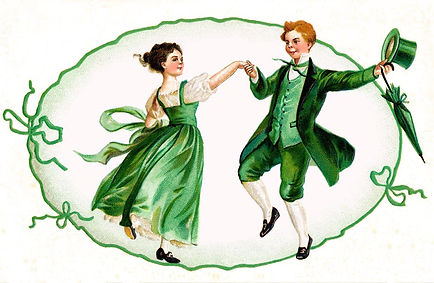



Culture - Irish Dancing
The early history of Irish dance reveals a constant shifting of population through migration and invasions. Each of these peoples brought their preferred types of dance and music. There are only vague references to the early history of Irish dancing, but there is evidence that among its first practitioners were the Druids, who danced in religious rituals honouring the oak tree and the sun. Around 400 AD, after the conversion to Christianity, the new priests accepted the style of dancing as a religious practice. During the mid sixteenth century, dances were performed in the great halls of the newly built castles. Some of the dances were adapted by the sixteenth century English invaders and brought to the court of Queen Elizabeth. One of these dances was the Trenchmore, which was an adaptation of an old Irish peasant dance. Dancing was also performed during wakes, where the mourners follow each other in a ring around the coffin to bagpipe music. Several versions of the same dance were to be found in different parts of Ireland. In this way a rich heritage of Irish dances was assembled and modified over the centuries. Today, jigs, reels, hornpipes, sets, half sets, polkas and step dances are all performed. Solo dancing or step dancing first appeared at the end of the eighteenth century. Also, dancers today use their costumes to commemorate the clothing of the past and each school of dancing has its own distinct costume. Irish dancing became a cultural and religious staple incorporated into Christian services and celebrations, such as wakes.

